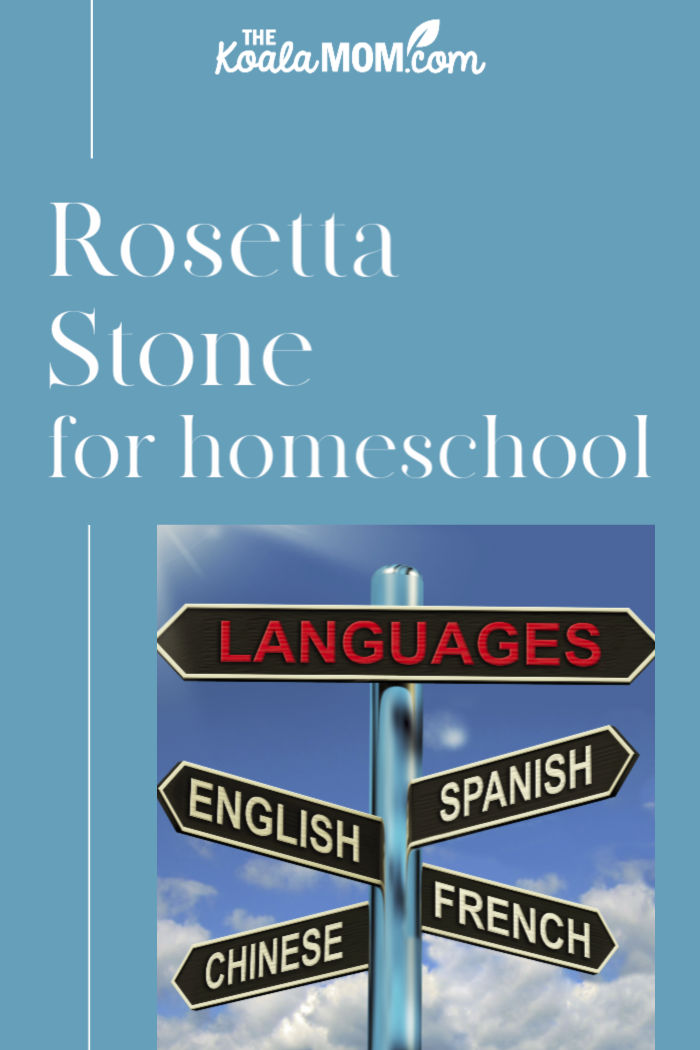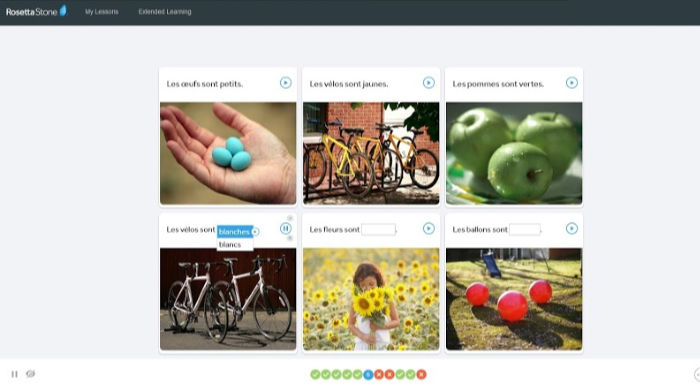Here in BC, Grade 5 is the year in which kids are expected to start learning a second language (if they haven’t already). We are using Rosetta Stone in our homeschool to help Sunshine and Lily learn French and German (respectively). I’ve been super happy with this language learning program. Here’s more about why we like using Rosetta Stone in our homeschool.

I received two complimentary subscriptions to Rosetta Stone for the purposes of this review; all opinions expressed are my own.
Rosetta Stone for French
Sunshine (Grade 6) has been learning French on and off since Kindergarten. I’ve tried a couple different methods of teaching her French, from apps to textbooks, but because I don’t speak French myself, none of these methods have been terribly successful. (My husband learned French during university, but hasn’t had a lot of time to help Sunshine learn. Once she’s a bit more fluent, they can try to have some conversations together.)
Because she already knows a smattering of French, Sunshine was very excited to start Rosetta Stone. We used her email address to set up her account. She’s now able to login on any of our computers or tablets to practice her French. (We’ve had some glitches with the Rosetta Stone app on the tablet, however, so I prefer to have her use the computer.)

When Sunshine logs in, she can see her student dashboard (above). This shows her progress through each unit, which is broken down into several lessons, which are broken down into different parts. She can review any lesson. If she doesn’t score well enough on a certain section, then she needs to retry it before she can move on to the next part.
Rosetta Stone for German
I spent a lot of time this summer thinking about our curriculum and what language Lily should learn. She’s indicated that she has no interest in French (like me). I suggested German, because I studied it in university and always enjoyed it. She also has friends who are learning German, which would give her an opportunity to practice. And so she started learning German with Rosetta Stone.
Lily has been working through the units at a slower pace than Sunshine. She has no previous experience with the language and finds it frustrating at times. One thing I’ve appreciated about Rosetta Stone is that each student can work at their own pace. While the Core Lesson is about thirty minutes long, other parts of the lesson are only ten or fifteen minutes long. If Lily is doing well and having fun, she can keep working. If she’s getting frustrated, we take a break and leave it for the next day.
I have to say, I’ve enjoyed listening to Lily learning German and helping her with her lessons if necessary. While Sunshine has been able to work completely independently (as I wanted), Lily has been happy to have some coaching. For example, German vowels have slightly different sounds than we’d given them in English, so I can help her practice her pronunciation.
More thoughts on Rosetta Stone
Rosetta Stone uses an immersion method of teaching second languages. Students are given plenty of pictures with phrases in their chosen language. This makes it easy for learners of any age to begin learning another language. And many of learn better when we have pictures to associate with words (think of the flash cards used in elementary school!).
Sometimes Rosetta speaks a phrase and Sunshine or Lily has to chose the right picture to go with the phrase. Sometimes they fill-in-the-blank to finish the phrase. For pronunciation, they have to repeat the word or phrase to the computer. (A microphone and speaker are thus required for your computer. One of our computer monitors has a built-in mic; my husband was able to find a mic to use with our other computer.)
I like the way that Rosetta Stone breaks language learning down into listening, speaking, grammar and other parts. The Core Lesson introduces the words or themes for the lesson, and then each following lesson focuses on a different aspect of those words. This gives kids a well-rounded approach to language learning, which I found lacking in the other app we used.
Kids also get immediate feedback on their work. If one of the girls doesn’t pronounce the word or phrase as well as she should, then she has to repeat it. They can see their score as soon as they’ve finished the lesson and know whether they need to keep trying.
Start Learning a New Language Today!
Rosetta Stone can help you learn over twenty different languages, including French, German, Italian, Spanish, Chinese, Korean, and more. They offer a thirty-day guarantee, so if your child absolutely hates learning a new language, you can get your money back. You can also try it completely free for 3 days before buying.
For more information about learning a new language with Rosetta Stone, drop by their website or follow them on Instagram, Facebook, Twitter or YouTube.



No Responses Yet